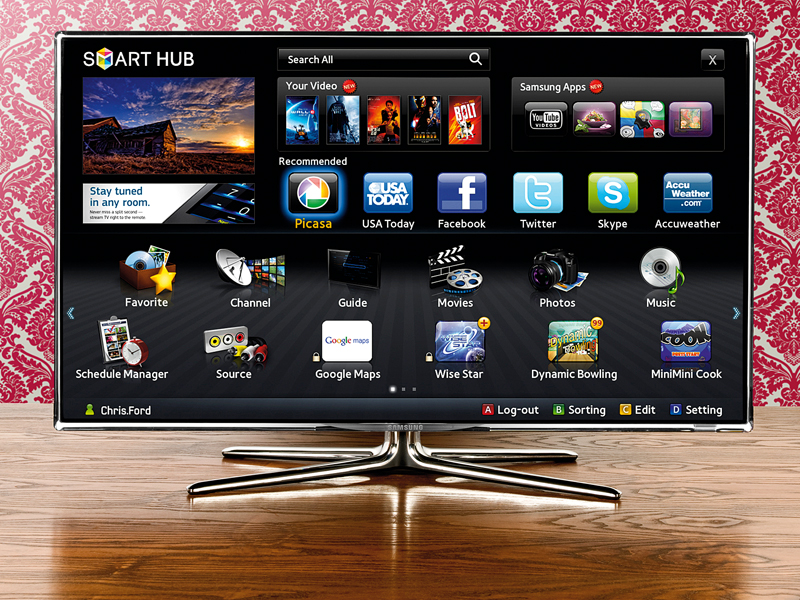Why you can trust TechRadar

There aren't many stones Samsung has left unturned with the UE40D7000 in its quest to deliver a truly high-end TV. For a start, its design, is a huge selling feature in itself, thanks to its almost impossibly slender bezel and tiny rear. The technology that's gone into creating this look is itself remarkable. But it's just the tip of the iceberg.
A big hint at just how much the UE40D7000 has got going on inside its svelte form comes from its connections. For a start, it's got four HDMI inputs, all built to the v1.4 spec. This up-to-date HDMI spec is important because it means they're capable of taking in full HD 'active' 3D images from 3D Blu-ray players.
Also significant is the UE40D7000's carriage of three USBs. This initially looks a bit OTT, actually, even given the wide variety of video, photo and music file formats the USB slots can play back. But then you realise that the TV can use one of the USBs to record to USB HDDs from its built-in HD tuners (the set carries both Freeview HD and Freesat HD tuners).
The UE40D7000 has a LAN port, as required of any Freeview HD TV. But with TVs commonly not sitting conveniently close to broadband routers, it's a relief to find that it's also got built-in Wi-Fi - a feature that will hopefully become standard in 2012, but which this year remains disappointingly rare in the TV world.
The Wi-Fi/LAN options have two distinct but equally important purposes. First, they can be used to pipe in multimedia files of most types from a networked DLNA PC. But even better, they provide your means of access to the full version of Samsung's Smart TV online service.
This means it benefits from the Skype and Web browser features absent from some of Samsung's lower-end Smart TVs - anything below the D65 series, in fact. Though note that you can only use the Skype functionality if you add an optional extra Samsung webcam.
The amount of services available on Samsung's Smart TV platform really is extensive these days. Sensibly divided into separate 'Premium' (largely video-based) and secondary tiers, the available services and smaller 'apps' include the BBC iPlayer; BBC News; the AceTrax movie purchase/rental service; LoveFilm; Muzu TV; Facebook; Twitter; Skype; a relatively new 3D video channel featuring documentaries and music videos for the most part; and more basic game and infotainment apps than you can shake a very large stick at.
Sign up for breaking news, reviews, opinion, top tech deals, and more.
It remains the case that many of the secondary apps are of minority interest at best, but there has perhaps been a little refinement in their quality since the first of 2011's Samsung TVs rolled in.
Turning to the features provided for calibrating the UE40D7000's pictures, they're reasonably extensive. There are white balance and gamma adjustments, a degree of colour management (though professional installers would doubtless wish for more here), various noise reduction systems, a series of themed picture presets, and an impressive amount of control over Samsung's motion processing system that allows you to manually tweak its judder and blur components.

John has been writing about home entertainment technology for more than two decades - an especially impressive feat considering he still claims to only be 35 years old (yeah, right). In that time he’s reviewed hundreds if not thousands of TVs, projectors and speakers, and spent frankly far too long sitting by himself in a dark room.
